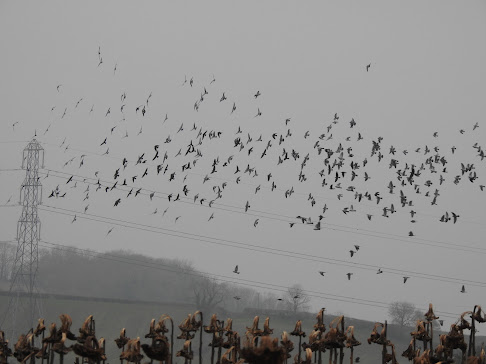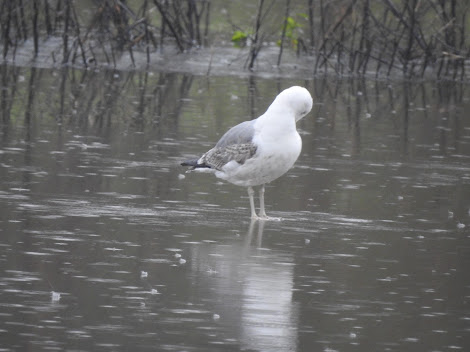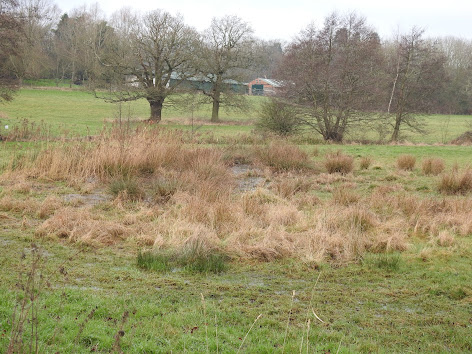So here we are, a new year and a switch in emphasis. Gone is the Morton Bagot year list, in its place is the Circle year list. But it's a bit of a tradition to start before dawn, and to bird all day at Morton Bagot. So that's what I did.
Mind you my first two birds, Robin and Blackbird were heard from the bathroom while it was still pitch black. I arrived at Morton Bagot at 07.26 just as it was starting to get light. Too dark to see the writing in the notebook, but light enough to see a Woodcock appear from around the side of Bannams Wood and disappear into the scrub on the Morton Bagot side of the road. What a start. I failed to find any in 2021.
For my first hour my intention was to find owls, so I had left the camera at home. A hooting Tawny Owl was my only success in that regard, but any disappointment was more than made up for by a calling Brambling which flew west (probably from a nearby roost site). I guess its my advancing years, but like the previous two this winter my eyes failed me when I tried to locate it.
After returning for breakfast, I was back in the field by 09.30. This time I brought my camera, but my arrival coincided with the passage of some heavy rain. A Collared Dove was noteworthy in Morton Bagot terms as they seem to be getting scarcer here.
 |
| Collared Dove and admirer |
Once the rain had passed, I wandered down to the south end gathering the usual suspects as I went. A couple of Coal Tits at Netherstead, and a flock of 25 Goldfinches were nice to see.
One bird firmly on the day's wish list was Jack Snipe, and after a bit of blundering about I finally flushed one. Oddly there were no Common Snipe in the marsh. A Yellowhammer flew over, and I even managed to see it. Later in the day five more flew over me near the church, my best count here for a few years. If only they would land.
The flash field was OK. A flock of 32 Greylag Geese poked their heads out of the grass, the nearest flash contained 22 Mallard, and some Wigeon. The furthest flash produced more Wigeon, giving a figure of nine for the whole site, 24 Teal, and 13 Lapwings.
 |
| Greylag Geese |
 |
| Wigeon |
The hedgerows in this area contained numerous Redwings, and Fieldfares, four Stonechats, and at least eight Bullfinches. A brief diversion to Stapenhill Wood produced a calling Marsh Tit.
 |
| A splash of colour on a grey day |
By lunchtime I was up to 57 species, and was keen to get back for the afternoon session.
A series of annoyingly heavy showers curtailed the day, and probably put paid to my chances of Barn Owl. But at least I finally recorded some Gulls as a group of seven Lesser Black-backs and two Herring Gulls flew west. I was destined to miss out on Black-headed Gull all day.
The final bird, my sixtieth species, was a Kingfisher which called loudly from the Morton Brook as I was scoping the flashes one last time.
However, the most spectacular sighting came as dusk drew in and thousands of corvids gathered to roost in the Morton plantation, and on the distant Mars Hill. The vast majority were Jackdaws, although about 10% were Rooks. My estimate came out at 1480 Jackdaws and 130 Rooks, but I suspect there were far more than that. Quite a sight.











































